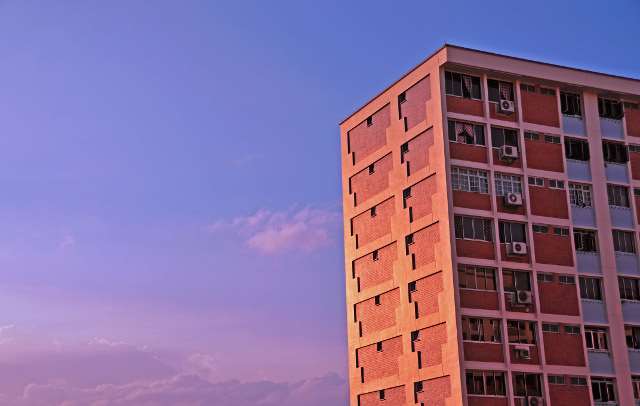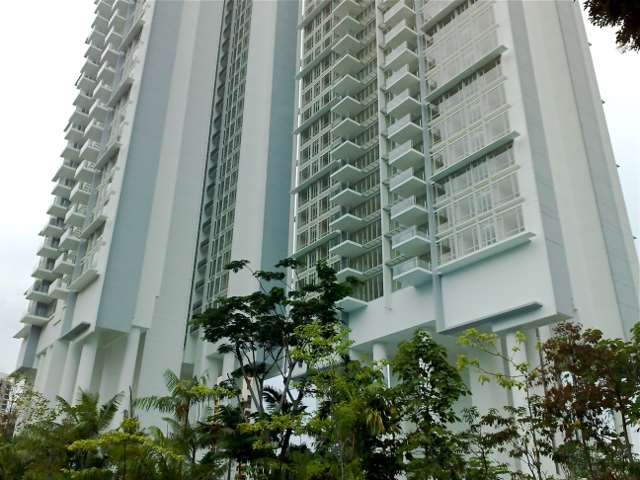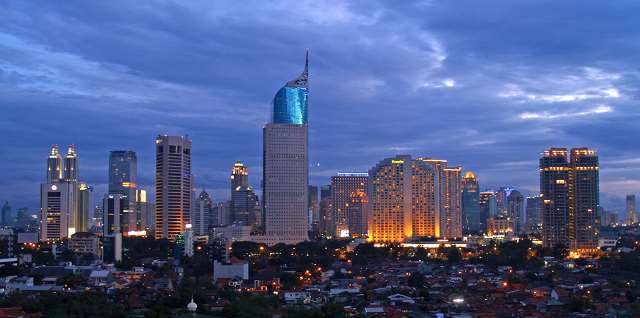HDB to upgrade existing towns as BTO supply tapers
![]()
The Housing Development Board (HDB) has reaffirmed its commitment to improving existing towns and to enhance living environments while providing better amenities for residents. This comes after the board has largely fulfilled first-timer demand for flats. The 2014/2015 financial year saw an expansion of HDB upgrading programmes in more towns, resulting in a S$574 million deficit in the upgrading segment, an increase in the deficit from S$568 million the year before.
Property prices unlikely to rebound in 2016
Property prices are eight per cent lower compared to their peak in Q3 2013. RHB Research expects property prices to drop another six to eight per cent in 2016. Continued price declines will be driven by property developers lowering prices to clear stock, due to looming qualifying certificate (QC) charge for unsold inventory, compounded with existing cooling measures.
NUS SRPI flash estimates: non-landed private home prices rise
According to the National University of Singapore's (NUS) flash estimate for its Overall Singapore Residential Price Index (SRPI), prices of non-landed private homes rose 0.1 per cent month-on-month in October, following a 0.3 per cent month-on-month rise in September. However, despite the overall rise in condo prices, small apartments and condo units (smaller than 506 square feet) in all regions saw prices dip 0.6 per cent in October, after a 0.7 per cent dip in September.
Lower property taxes in 2016
The Inland Revenue Authority of Singapore (IRAS) stated that all HDB flat owners will pay lower or no property tax in 2016, as a result of annual values of real estate dropping in tandem with rents. The tax savings for HDB owners are estimated to be between nine and 24 per cent. On the other hand private property owners can expect tax savings of three to 20 per cent.
MAS: cooling measures stabilized Singapore's housing market, to be kept in place
![]()
The Monetary of Singapore (MAS) said private housing transactions, prices and mortgage loans could have been more than 30 per cent higher than current levels if not for the measures to cool property prices. Tax measures including the Seller's Stamp Duty (SSD) and Additional Buyer's Stamp Duty had greater impact on transactions and prices compared to lending and land supply measures.
Lending measures consisting of loan-to-value (LTV) limits and Total Debt Servicing Ratio (TDSR) controlled the growth of mortgage loans as well as transactions and prices through the credit channel. These measures also improved the risk profile of borrowers.
Despite cooling measures successfully controlling property prices and ensuring the property market is at a sustainable level over time, MAS said the government intends to keep the cooling measures in place. In the Outside Central Region (OCR), home prices are still 30 per cent higher than pre-global financial crisis levels.
MAS is aware that these measures risk unexpected downward correction resulting from external headwinds, which can be caused by a poor external outlook, interest rate increases by the US Federal Reserve, as well as volatility in financial and asset markets. Minister for National Development Lawrence Wong said the government does not want to risk the property market rebounding prematurely, adding that price corrections have been moderate prior to price increases.
Higher demand and prices for Melbourne properties compared to Sydney
According to the Australian Financial Review, property market experts believe 2016 will see Melbourne overtaking Sydney in terms of price growth and investor demand. Melbourne's preliminary auction rates have fallen to 64.7 per cent, while Sydney's have dipped to 59.3 per cent. According to Corelogic/RP Data, this is the lowest figure since February 2013.
Both cities have experienced price booms in recent years. Price growth in Melbourne appears more sustainable compared to Sydney, which is expected to experience a price correction in 2016. The Australian Financial Review reported predictions of double-digit growth for Melbourne, and four to nine per cent growth for Sydney. According to a recent NAB Residential Property Survey, foreign buyers made up 15 per cent of sales in Melbourne in Q3 2015, an increase of 4 per cent from the previous quarter. Other data has also shown a deepening interest in Melbourne from Chinese investors.
2016: a challenging year for Hong Kong's luxury property market
![]()
As developers face greater competition from rising numbers of project launches, luxury real estate values in Hong Kong could dip ten per cent in the next year. With approximately 70 new houses that are completed but unsold in the market, the housing market on Hong Kong Island alone will face greater challenges. To put things in perspective, 42 houses were sold in Hong Kong Island's primary and secondary markets over the last twelve months.
Recent financial turbulence ending in sharp falls in stock markets of Hong Kong and China have dampened investment sentiment for the property sector. However, there were some luxury primary sales launches that performed satisfactorily.
Transaction volumes in Kowloon/New Territories hiked to 280 in Q3 2015, a 159 per cent year-on-year hike and the highest recorded since the introduction of Double Stamp Duty (DSD) in Q1 2013. Despite the luxury market's positive results, luxury residential prices remained fairly stable over Q3 2015 due to greater caution on the part of investors.
Home values in London fall following increase in stamp duty transaction tax
Bloomberg's analysis of Land Registry data points to home values dipping 1.5 per cent in London's best districts, to approximately £880,600 pounds ($1.3 million), compared to October 2014. Since the stamp duty transaction tax was increased to as much as twelve per cent for the most expensive properties in December, sales of luxury homes have slumped. From April 2016 the tax applied to landlords and second-home owners will also be increased by three percentage points.
According to Howard Archer, Chief European Economist at HIS Global Insight London, the strongest impact has been on homes costing 1.2 to two million-pounds, as buyers of these houses are not the extremely rich who can afford the increase in taxes. For this group, the stamp duty increase makes a sizable difference.
Malaysia unlikely to loosen cooling measures
According to JLL, stringent cooling measures implemented recently have suppressed price gains following the boom between 2009 and 2013.
RHB Research Institute also said that cooling measures such as higher Real Property Gain Tax rates, higher minimum value of property that foreigners can buy, as well as the removal of Developer Interest Bearing Scheme (DIBS), have been effective, with residential prices dipping 4.7 per cent in Q1 2015 and three per cent since the start of the year.
However, the market correction is incomplete, with median house prices in Kuala Lumpur still more than five times the annual median household income. Malaysia's government is keen to control the amount of household debt, and cooling measures are expected to continue.
Imminent rise of US interest rates will impact housing market of emerging markets
Kate Everett-Allen of Knight Frank International Residential Research expects an increase in US rate having consequences beyond the US housing market, and will impact the housing market of countries with currencies pegged to the US dollar together with the world's emerging markets. She expects house price rankings for emerging markets to slide in 2016, considering an imminent rise in US rates.
The current question is when and how quickly would the US Federal Reserve raise the US interest rate. If analysts' estimate of a December raise is accurate, widespread repercussions are expected.
New luxury tax rules for property in Indonesia
![]()
In a bid to deal with uncertainty plaguing the property sector, Indonesia has changed how it applies luxury tax to certain apartments and houses. Previously, houses of 350 square metres or larger were levied a 20 per cent luxury tax. But with the new rule change shifting to price-based taxation, houses with a sale price of S$2.04 million (20 billion rupiah) and above will face a 20 per cent luxury tax.
The luxury tax will also be applied to apartments with sales price of S$1.02 million (10 billion rupiah) or more. Prior to the rule change, the tax was levied on apartments 150 square metres or larger.
According to Finance Minister Bambang Brodjonegoro, the new rule change seeks to ensure a fairer tax system, solving the issue of small but expensive apartments in the middle of Jakarta being untaxed prior the implementation of price-based tax rules.
For more District Guides, you can head over to iProperty.com Singapore.

The Housing Development Board (HDB) has reaffirmed its commitment to improving existing towns and to enhance living environments while providing better amenities for residents. This comes after the board has largely fulfilled first-timer demand for flats. The 2014/2015 financial year saw an expansion of HDB upgrading programmes in more towns, resulting in a S$574 million deficit in the upgrading segment, an increase in the deficit from S$568 million the year before.
Property prices unlikely to rebound in 2016
Property prices are eight per cent lower compared to their peak in Q3 2013. RHB Research expects property prices to drop another six to eight per cent in 2016. Continued price declines will be driven by property developers lowering prices to clear stock, due to looming qualifying certificate (QC) charge for unsold inventory, compounded with existing cooling measures.
NUS SRPI flash estimates: non-landed private home prices rise
According to the National University of Singapore's (NUS) flash estimate for its Overall Singapore Residential Price Index (SRPI), prices of non-landed private homes rose 0.1 per cent month-on-month in October, following a 0.3 per cent month-on-month rise in September. However, despite the overall rise in condo prices, small apartments and condo units (smaller than 506 square feet) in all regions saw prices dip 0.6 per cent in October, after a 0.7 per cent dip in September.
Lower property taxes in 2016
The Inland Revenue Authority of Singapore (IRAS) stated that all HDB flat owners will pay lower or no property tax in 2016, as a result of annual values of real estate dropping in tandem with rents. The tax savings for HDB owners are estimated to be between nine and 24 per cent. On the other hand private property owners can expect tax savings of three to 20 per cent.
MAS: cooling measures stabilized Singapore's housing market, to be kept in place

The Monetary of Singapore (MAS) said private housing transactions, prices and mortgage loans could have been more than 30 per cent higher than current levels if not for the measures to cool property prices. Tax measures including the Seller's Stamp Duty (SSD) and Additional Buyer's Stamp Duty had greater impact on transactions and prices compared to lending and land supply measures.
Lending measures consisting of loan-to-value (LTV) limits and Total Debt Servicing Ratio (TDSR) controlled the growth of mortgage loans as well as transactions and prices through the credit channel. These measures also improved the risk profile of borrowers.
Despite cooling measures successfully controlling property prices and ensuring the property market is at a sustainable level over time, MAS said the government intends to keep the cooling measures in place. In the Outside Central Region (OCR), home prices are still 30 per cent higher than pre-global financial crisis levels.
MAS is aware that these measures risk unexpected downward correction resulting from external headwinds, which can be caused by a poor external outlook, interest rate increases by the US Federal Reserve, as well as volatility in financial and asset markets. Minister for National Development Lawrence Wong said the government does not want to risk the property market rebounding prematurely, adding that price corrections have been moderate prior to price increases.
Higher demand and prices for Melbourne properties compared to Sydney
According to the Australian Financial Review, property market experts believe 2016 will see Melbourne overtaking Sydney in terms of price growth and investor demand. Melbourne's preliminary auction rates have fallen to 64.7 per cent, while Sydney's have dipped to 59.3 per cent. According to Corelogic/RP Data, this is the lowest figure since February 2013.
Both cities have experienced price booms in recent years. Price growth in Melbourne appears more sustainable compared to Sydney, which is expected to experience a price correction in 2016. The Australian Financial Review reported predictions of double-digit growth for Melbourne, and four to nine per cent growth for Sydney. According to a recent NAB Residential Property Survey, foreign buyers made up 15 per cent of sales in Melbourne in Q3 2015, an increase of 4 per cent from the previous quarter. Other data has also shown a deepening interest in Melbourne from Chinese investors.
2016: a challenging year for Hong Kong's luxury property market
As developers face greater competition from rising numbers of project launches, luxury real estate values in Hong Kong could dip ten per cent in the next year. With approximately 70 new houses that are completed but unsold in the market, the housing market on Hong Kong Island alone will face greater challenges. To put things in perspective, 42 houses were sold in Hong Kong Island's primary and secondary markets over the last twelve months.
Recent financial turbulence ending in sharp falls in stock markets of Hong Kong and China have dampened investment sentiment for the property sector. However, there were some luxury primary sales launches that performed satisfactorily.
Transaction volumes in Kowloon/New Territories hiked to 280 in Q3 2015, a 159 per cent year-on-year hike and the highest recorded since the introduction of Double Stamp Duty (DSD) in Q1 2013. Despite the luxury market's positive results, luxury residential prices remained fairly stable over Q3 2015 due to greater caution on the part of investors.
Home values in London fall following increase in stamp duty transaction tax
Bloomberg's analysis of Land Registry data points to home values dipping 1.5 per cent in London's best districts, to approximately £880,600 pounds ($1.3 million), compared to October 2014. Since the stamp duty transaction tax was increased to as much as twelve per cent for the most expensive properties in December, sales of luxury homes have slumped. From April 2016 the tax applied to landlords and second-home owners will also be increased by three percentage points.
According to Howard Archer, Chief European Economist at HIS Global Insight London, the strongest impact has been on homes costing 1.2 to two million-pounds, as buyers of these houses are not the extremely rich who can afford the increase in taxes. For this group, the stamp duty increase makes a sizable difference.
Malaysia unlikely to loosen cooling measures
According to JLL, stringent cooling measures implemented recently have suppressed price gains following the boom between 2009 and 2013.
RHB Research Institute also said that cooling measures such as higher Real Property Gain Tax rates, higher minimum value of property that foreigners can buy, as well as the removal of Developer Interest Bearing Scheme (DIBS), have been effective, with residential prices dipping 4.7 per cent in Q1 2015 and three per cent since the start of the year.
However, the market correction is incomplete, with median house prices in Kuala Lumpur still more than five times the annual median household income. Malaysia's government is keen to control the amount of household debt, and cooling measures are expected to continue.
Imminent rise of US interest rates will impact housing market of emerging markets
Kate Everett-Allen of Knight Frank International Residential Research expects an increase in US rate having consequences beyond the US housing market, and will impact the housing market of countries with currencies pegged to the US dollar together with the world's emerging markets. She expects house price rankings for emerging markets to slide in 2016, considering an imminent rise in US rates.
The current question is when and how quickly would the US Federal Reserve raise the US interest rate. If analysts' estimate of a December raise is accurate, widespread repercussions are expected.
New luxury tax rules for property in Indonesia

In a bid to deal with uncertainty plaguing the property sector, Indonesia has changed how it applies luxury tax to certain apartments and houses. Previously, houses of 350 square metres or larger were levied a 20 per cent luxury tax. But with the new rule change shifting to price-based taxation, houses with a sale price of S$2.04 million (20 billion rupiah) and above will face a 20 per cent luxury tax.
The luxury tax will also be applied to apartments with sales price of S$1.02 million (10 billion rupiah) or more. Prior to the rule change, the tax was levied on apartments 150 square metres or larger.
According to Finance Minister Bambang Brodjonegoro, the new rule change seeks to ensure a fairer tax system, solving the issue of small but expensive apartments in the middle of Jakarta being untaxed prior the implementation of price-based tax rules.
For more District Guides, you can head over to iProperty.com Singapore.












